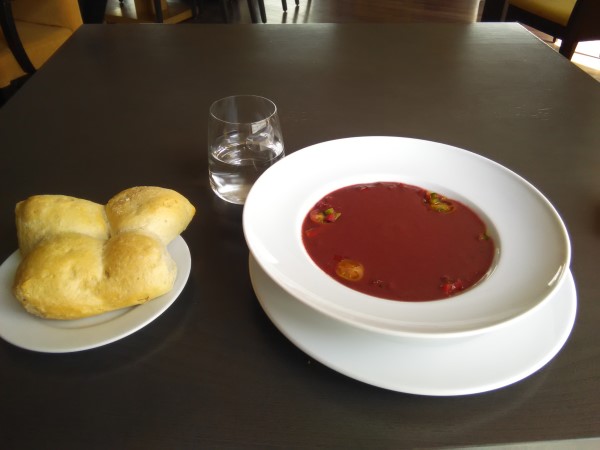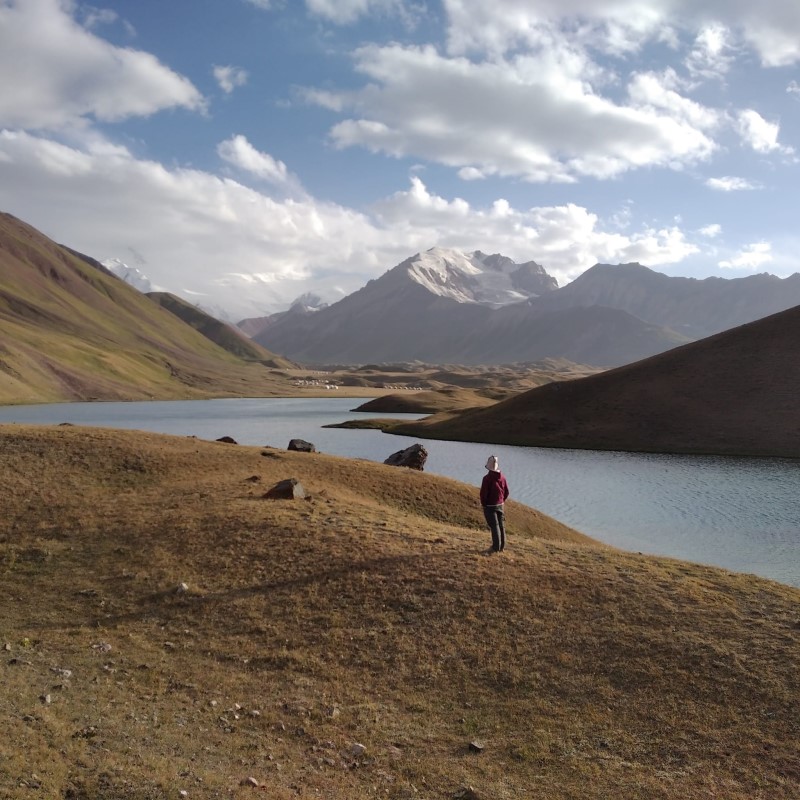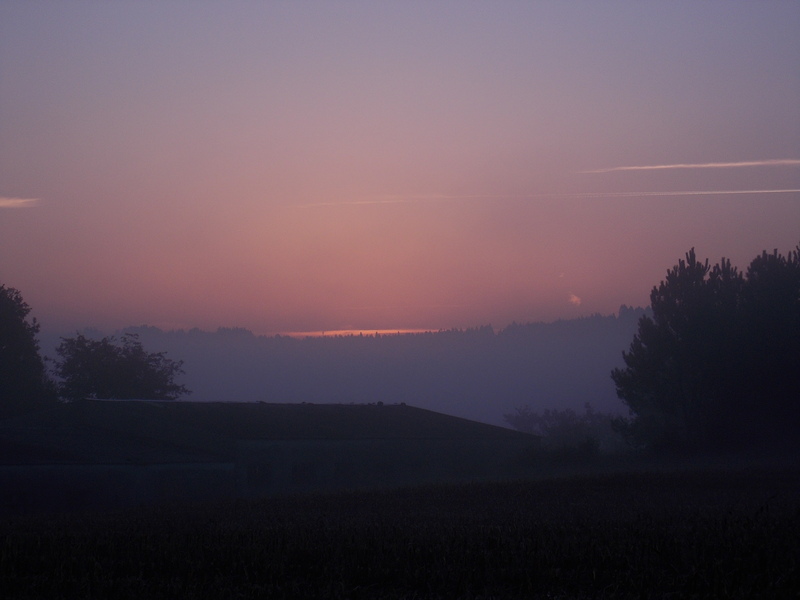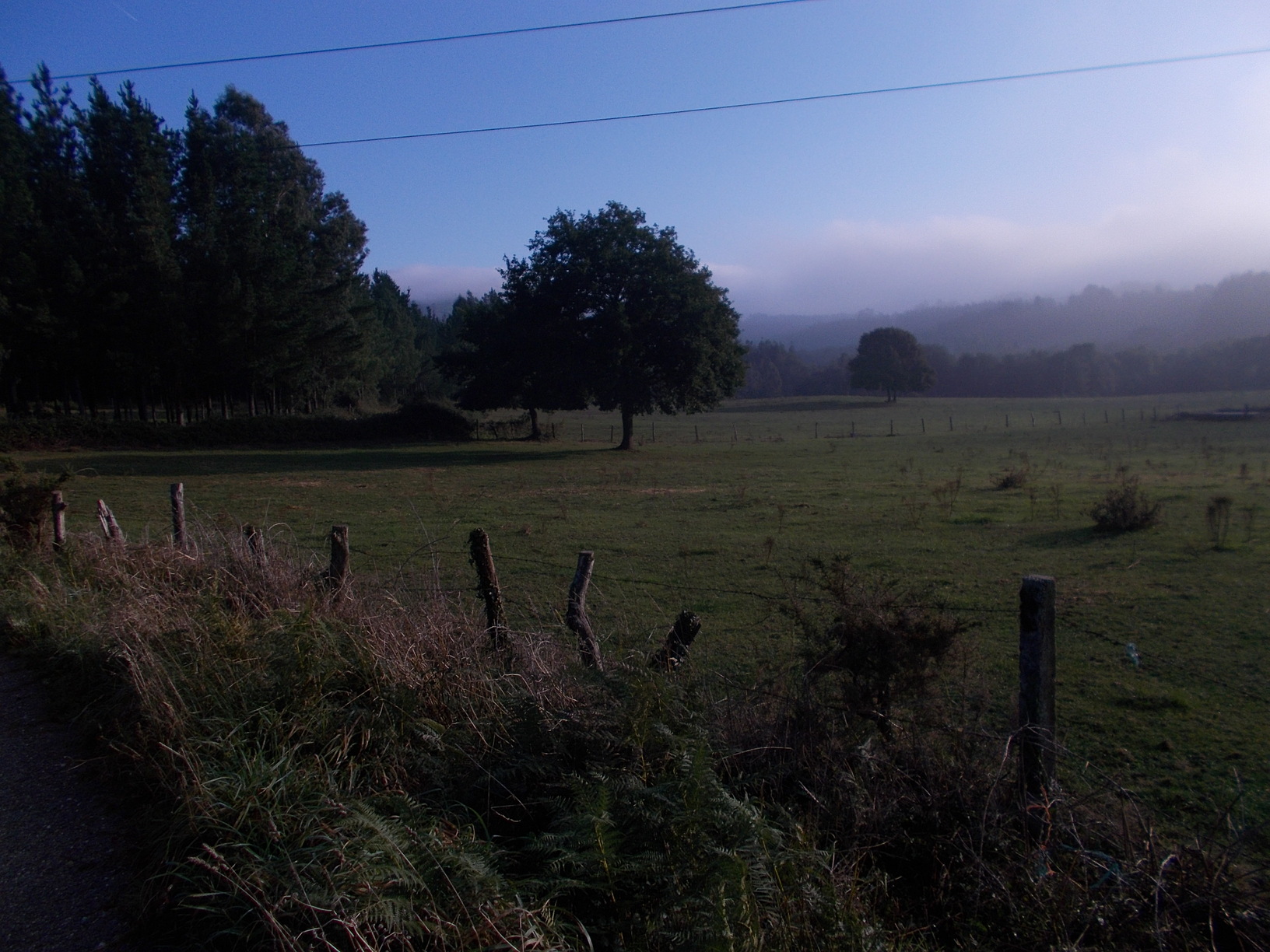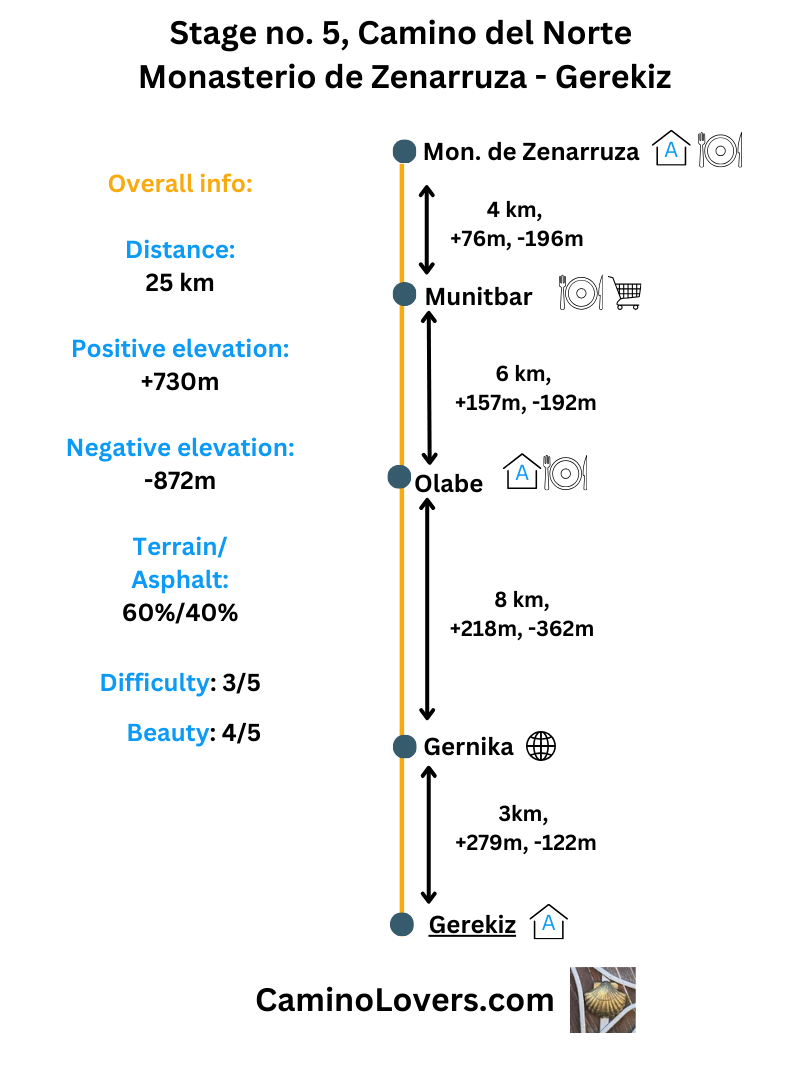
Basic Details
- Starting point: Monastery (with an albergue) Monasterio de Zenarruza.
- Ending point: Albergue de Peregrinos, Gerekiz
- Availability of alternative routes: No (in theory you can follow the GR 38 marked trail for a significant part of your day. However, this trail is not nicer than the Camino, it has more asphalt walking and it is longer than the “official” Camino. Hence I see no point in following this particular way instead of the marked “official Camino”)
- Distance: Official camino route: 25 km (download GPS here)
- Link to online map: here.
- Elevation difference: + 730m, – 870m.
- Difficulty score: 3/5.
- Beauty score: 4/5.
- Terrain/asphalt: 60%/40%.
- Next stage: Camino del Norte, Stage no. 6, from Gerekiz to Bilbao.
- Previous stage: Camino del Norte, Stage no. 4, from Deba to Monasterio de Zenarruza.
Elevation profiles for routes

– Elevation profile, official Camino route, generated by trackreport.net
Advanced info about the stage
- Trail marking: A bit confusing at times, with yellow arrows sometimes pointing in different directions. I think it is because in the past the Camino followed the road for a big chunk of the day, and now they take it on small roads or trails close to the road (which is obviously much better). However, do not be worried, since even if you follow the road for a bit, it will connect with the officially marked way always, sometimes in 200 meters and sometimes in one kilometer, but it will.
- Alternative route info: There is no alternative route available, at least not one worth taking.
- Natural places worth seeing: Nothing in particular, but as you can see on the pictures below, the entire stage is very nice and green. The stage passes through a rural/agricultural parts of Basque country, and while many of these houses do not serve their original purpose anymore (some were converted to albergues, some to hotels (casa rural), and some simply to holiday houses for their rich owners), you can still observe the beautiful traditional architecture and a sense for esthetic that Basque people have.
- Historical, architectural, and culinary places worth seeing:
- Gernika definitely tops the list. Not only has the city a wonderful vibe on any summer day, with always many young people around, and brimming with all sorts off on Mondays–the market day. Perhaps not your think because you likely do not want to make your backpack even more heavy than it already is :), but you can at least get some nice fruits/vegetables there, or some locally baked cake to sweeten your hard day on the Camino. Anyway, Gernika is a city of great historical significance, since on April 26, 1937, during the Spanish Civil War, the town was razed to the ground by German aircraft, sent by nobody else than Adolf Hitler. There are several landmarks and monuments in the city commemorating this say day, and I believe in a times we live right now (with World War III looming on a horizon), it is more than important to visit these places, recall the horrors, and realize that living in peace and having an ability to walk the Camino is not something we should take for granted…
- Except of Gernika, you will pass by several nice small chapels, namely Chapel of San Pedro, Chapel of Saint Tomas, and a couple of others. They are directly on the Camino, hence no special detour is needed. Sadly since the covid pandemic almost all churches in the north of Spain are locked, and you cannot go inside, but if you’re lucky and a local lady is cleaning the church right when you are passing by, you may get a glimpse on the interior as well :).
- Camping/bivouac options on this stage: Definitely doable, although there aren’t any official camping grounds or organized camping places along this stage. However, you can bivouac under the porch of one of the small chapels (protected from the rain), I’ve seen people camping on a football pitch in Gernika (it was big organized group of young Spanish pilgrims, probably classmates, but I see no reason why they won’t let you camp there for a change), and after Gernika you will find at least a couple of spots that aren’t marked “private property”, where you can pitch the tent, ideally when the sun is already setting.
- Dog friendly score: 4/5. Another great stage for dogs, with plenty of water, green spots, and not that much of asphalt walking. Also the albergues outside of Gernika (like the one in Gerekiz and many other in the zone) are dog friendly. These are big houses, always with a land or at least a garden, and hence there is no problem for your dog to stay there with you. Having said that, I still recommend calling/writing in advance, making sure that they will let you stay with the dog.
- Special remarks: No special remarks to this stage.
Accommodation options on today’s stage
* The infographic displays the number of pilgrim hostels (only pilgrims allowed), hostels (anyone allowed, shared rooms), and other accommodation options (hotels, pensions, etc, private rooms) in each point along the route, together with price range. For exact explanation of the pictograms we use check the explanations page. Below the infographic you will see our recommended picks (up to 3 pilgrim options and 1-2 “privacy” options, maximum five) for the stage, together with important information (but not too much info, just what you need :-)).

Recommended places to sleep along this stage
Pilgrim options:
- Albergue Andiketxe, Olabe (km 10). Location and reviews on Google maps here. 15 euro/night (a really good price for Basque country), 20 beds. It isn’t an ideal albergue in any means, but for the price a decent option in this zone with few albergues, and open all year long, with check-in time from 3pm to 7pm. You can get a dinner, and there’s a bar in the village too. The host speaks some English. Recommended way of reserving a bed: phone call, +34 94 625 31 50.
- Albergue Caserio Pozueta, Pozueta (km 23). Location and reviews on Google maps here. Great reviews across all platforms, real pilgrim vibe, delicious home made dinner. 16 beds in two rooms, price 15 euro for a bed, 31 euro for bed, dinner and breakfast. No doubt the best albergue on this stage. Recommended reservation method: phone call, +34 696 565 318, or +34 618 712 436.
- Albergue Gerekiz, Gerekiz (km 25). Location and reviews on Google maps here. Very decent albergue with good reviews on all platforms. 16 euro/bed, 30 beds in total. You can buy some drinks and food to warm up in the microwave. The kitchen is basically equipped. There’s option to order a food from a restaurant as well. Not as nice as the albergue in Pozueta, but definitely good for one night stay. Recommended reservation method: booking.com, click for the best price here.
Private/luxury options:
- By Andreea Apartments, Gernika (km 18). Location on Google maps here, reviews and everything on Booking.com here. Stunning reviews, up to 4 people, price 150 euro/night for the entire apartment (if you take 3 other pilgrims with you that’s only 37.5 per person). Very central location, the entire apartment is new and very clean. Check in from 3pm. Recommended reservation method: booking.com.
- Hotel Gernika, Gernika (km 18). Location and reviews on Google maps here. A good hotel frequented by both pilgrims and other travelers, individual rooms starting from 70 euro/night, great breakfast served from 7am (very atypical for Spain, but great for pilgrims). A little bit away from the Camino but easy to find. Check-in from 3 pm, but since it is a hotel they may let you in earlier too, as long as the room is ready. Recommended reservation method: the website of the hotel (the reservation system is easy and works well, you pay 10% deposit), or booking.com.
Pictures & videos from the stage
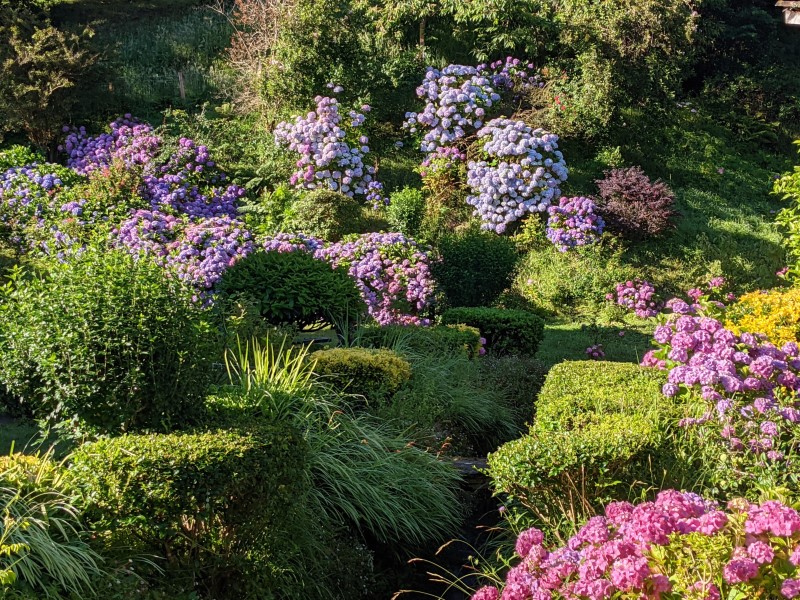
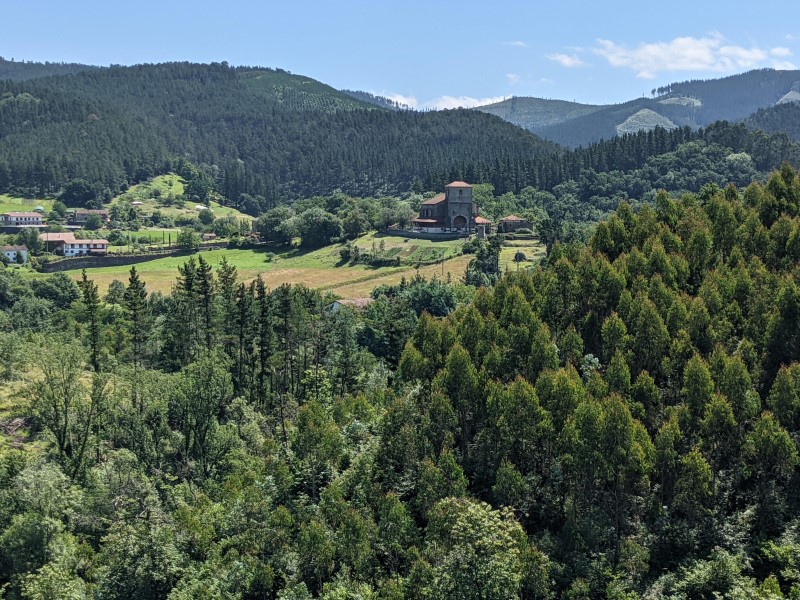
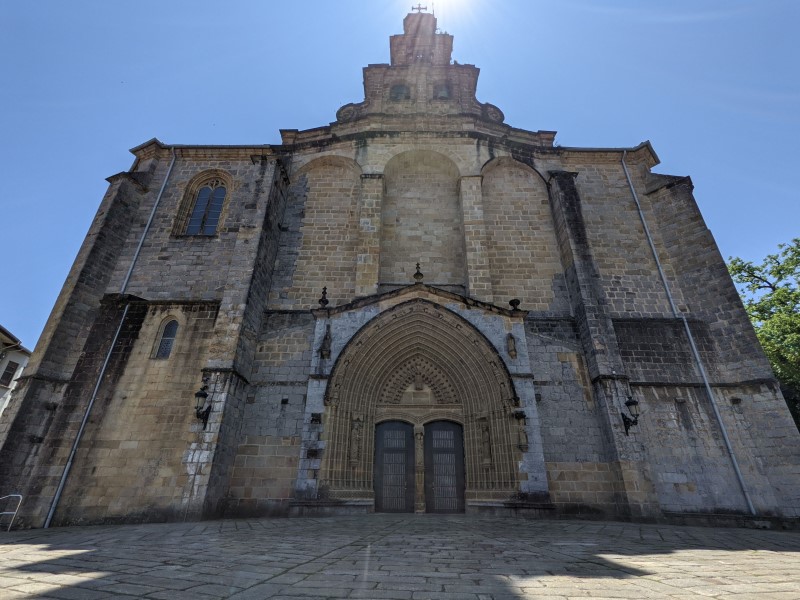
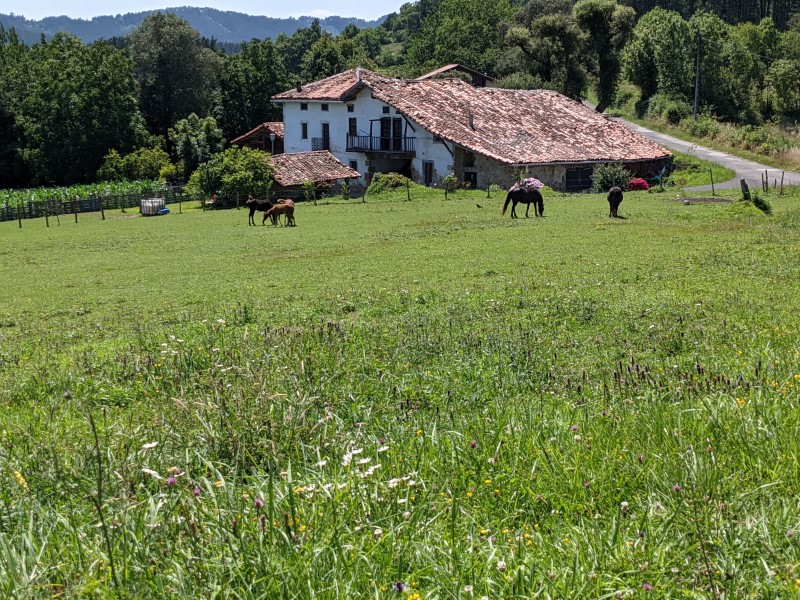
Video from the stage
Nice video I made while walking this way in 2021, two small dogs playing in the street. They are right on the Camino, so maybe you meet them too while walking there. They will just be a little bit older now, and perhaps not that playful anymore 🙂
Few tips at the end
- If you do not want to sleep in Gernika, you do not really have to be too worried about getting a bed. In a small settlements after Gernika (such as Pozueta or Gerekiz, the suggested end of the stage in this guide), there are always only a few houses but always at least one of them is an albergue 🙂. Sometimes you will see two albergues very close to each other, like 100 meters apart only. I guess that one of the inhabitants had the idea first–to start a hostel for pilgrims. He or she was doing really well, and hence owners of other houses in the zone imitated their idea. And while I would say that none of this albergues is super spectacular, they are all pretty decent and good for the night…
- Try to take this stage slowly, and enjoy the beautiful Basque countryside, and nice trails. Because very soon you’ll be in Bilbao, and you’ll have a lot of asphalt walking (some days close to 100% of the way). On this stage you should try to get the most of the fresh air and green beauty, for your feet, body, for your soul. Because the next stages of your way are not going to be that nice (unless you enjoy “big city life” of course).



![Ultralight Packing List for Camino de Santiago [2025 Edition]](https://caminolovers.com/wp-content/uploads/2022/03/altra-shoes-640-x-480.jpg)
